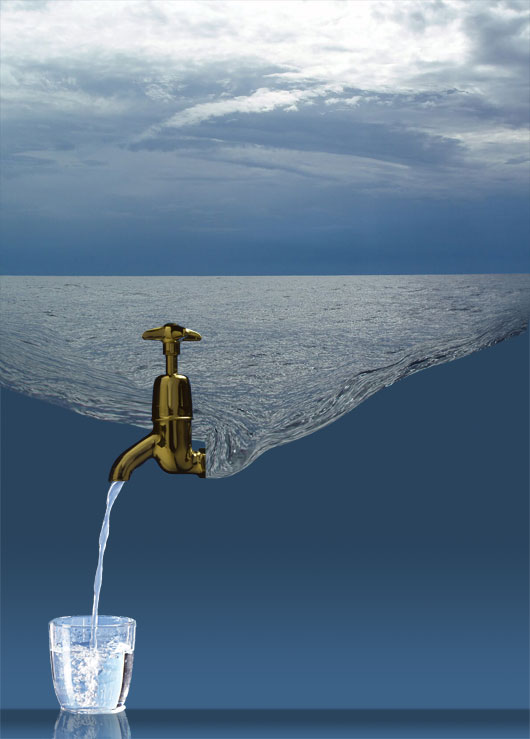


[File photo]
China had completed 121 desalination projects as of 2015, purifying over 1 million tons of sea water per day in an effort to tackle the country’s water shortage.
As one of the 12 most water-stressed countries in the world, China’s fresh water only accounts for 8 percent of the world’s total amount. Over 300 cities in China suffer from water shortages, while coastal cities including Shanghai and Shenzhen are in serious need of fresh water. By the end of 2030, coastal cities’ water deficit will reach 21.4 billion cubic meters.
“In addition to water-saving measures and water diversion, China must utilize sea water to tackle its water shortage. Sea water desalination will not be affected by [external factors including] climate change and geographic limitations, allowing the process to constantly and effectively provide fresh water,” said Li Linmei, vice director of the Tianjin-based Institute of Seawater Desalination and Multipurpose Utilization.
According to Li, desalination technologies can not only alleviate water shortages in coastal cities, they can also purify underground water in western China.
China’s desalination technologies have already helped other nations to tackle their own water shortages. According to People’s Daily, China has exported its desalination technology to countries including Indonesia and Pakistan.
Despite China’s own efforts in desalination, the industry still needs further improvement, as the price for purified sea water is between 5 and 8 RMB per ton, which is higher than the price of tap water.
 Fire brigade in Shanghai holds group wedding
Fire brigade in Shanghai holds group wedding Tourists enjoy ice sculptures in Datan Town, north China
Tourists enjoy ice sculptures in Datan Town, north China Sunset scenery of Dayan Pagoda in Xi'an
Sunset scenery of Dayan Pagoda in Xi'an Tourists have fun at scenic spot in Nanlong Town, NW China
Tourists have fun at scenic spot in Nanlong Town, NW China Harbin attracts tourists by making best use of ice in winter
Harbin attracts tourists by making best use of ice in winter In pics: FIS Alpine Ski Women's World Cup Slalom
In pics: FIS Alpine Ski Women's World Cup Slalom Black-necked cranes rest at reservoir in Lhunzhub County, Lhasa
Black-necked cranes rest at reservoir in Lhunzhub County, Lhasa China's FAST telescope will be available to foreign scientists in April
China's FAST telescope will be available to foreign scientists in April "She power" plays indispensable role in poverty alleviation
"She power" plays indispensable role in poverty alleviation Top 10 world news events of People's Daily in 2020
Top 10 world news events of People's Daily in 2020 Top 10 China news events of People's Daily in 2020
Top 10 China news events of People's Daily in 2020 Top 10 media buzzwords of 2020
Top 10 media buzzwords of 2020 Year-ender:10 major tourism stories of 2020
Year-ender:10 major tourism stories of 2020 No interference in Venezuelan issues
No interference in Venezuelan issues
 Biz prepares for trade spat
Biz prepares for trade spat
 Broadcasting Continent
Broadcasting Continent Australia wins Chinese CEOs as US loses
Australia wins Chinese CEOs as US loses